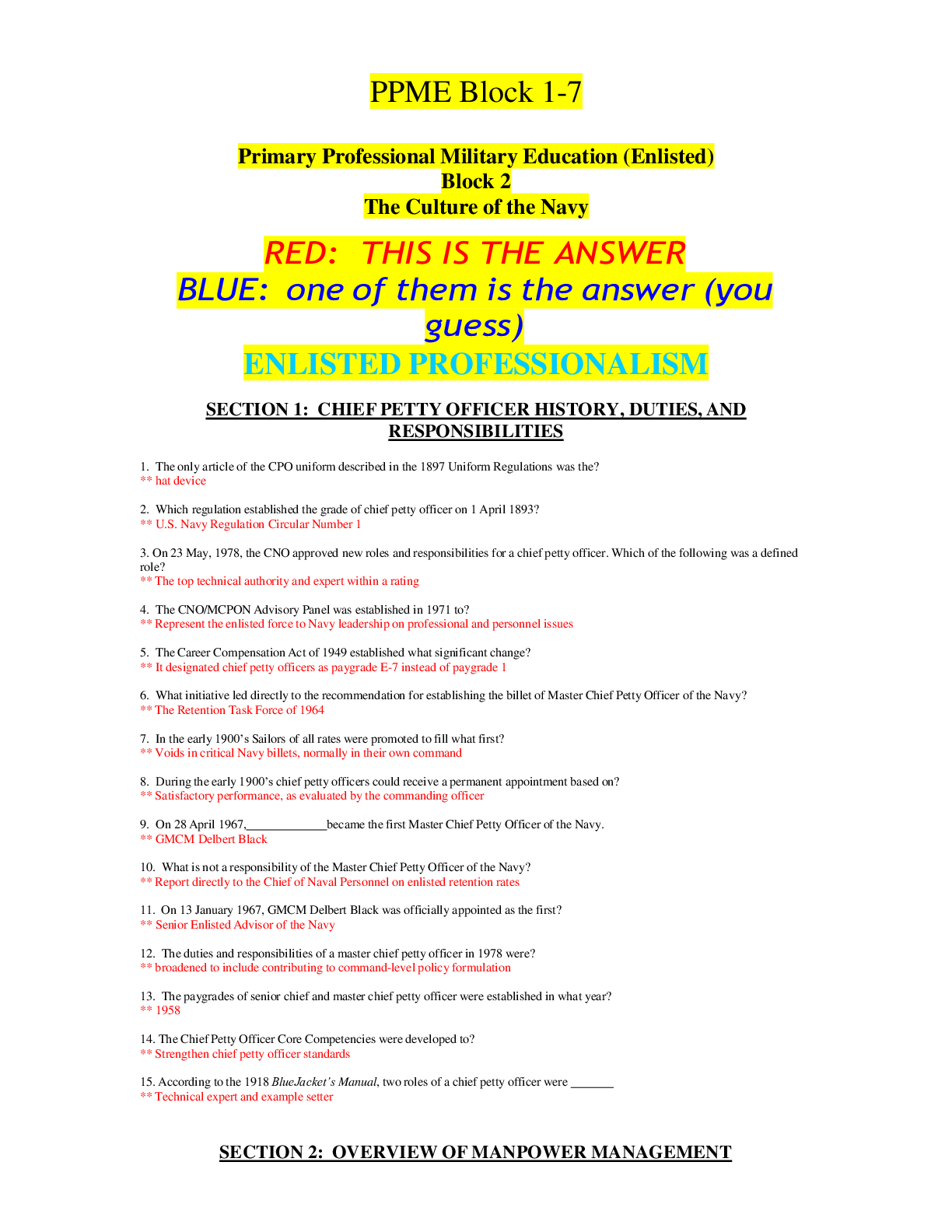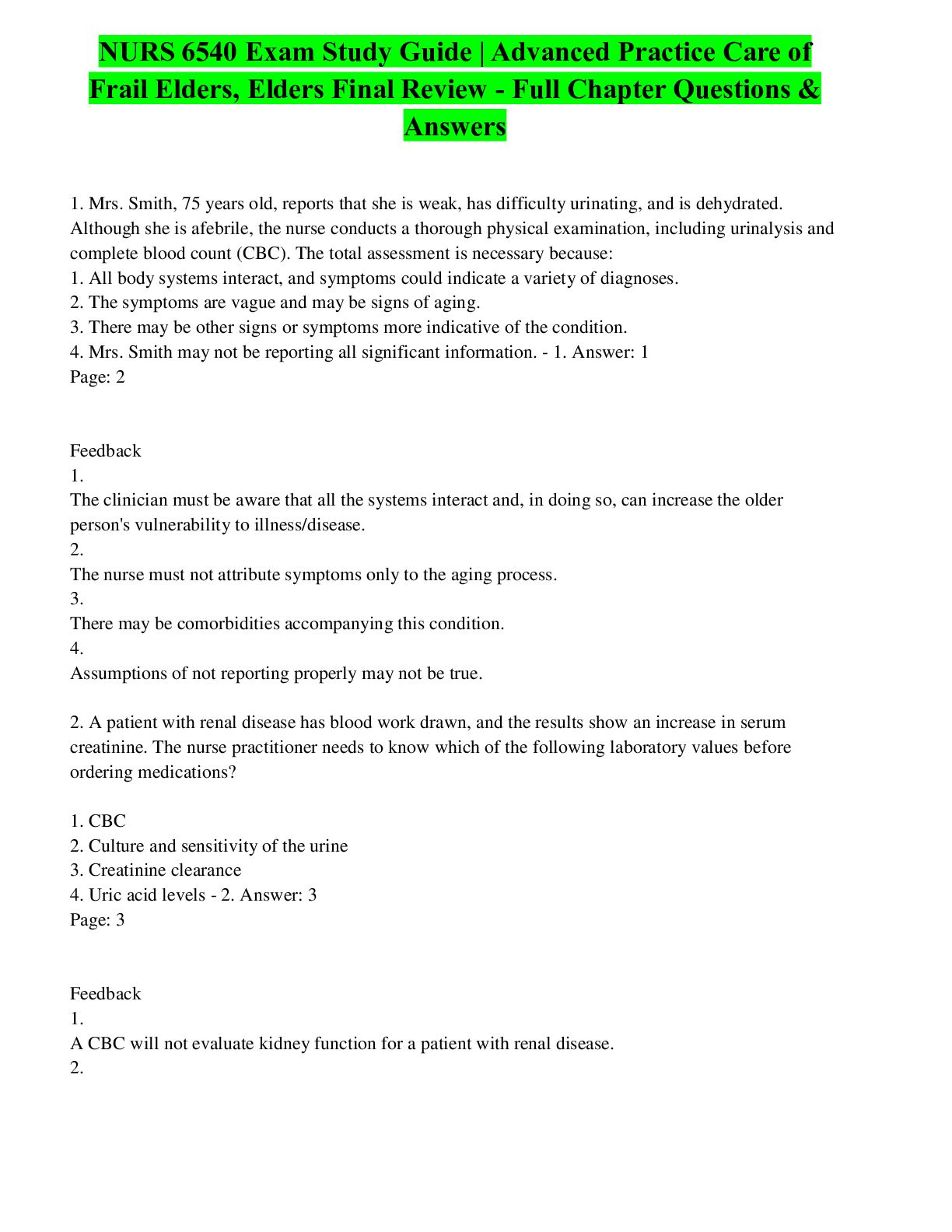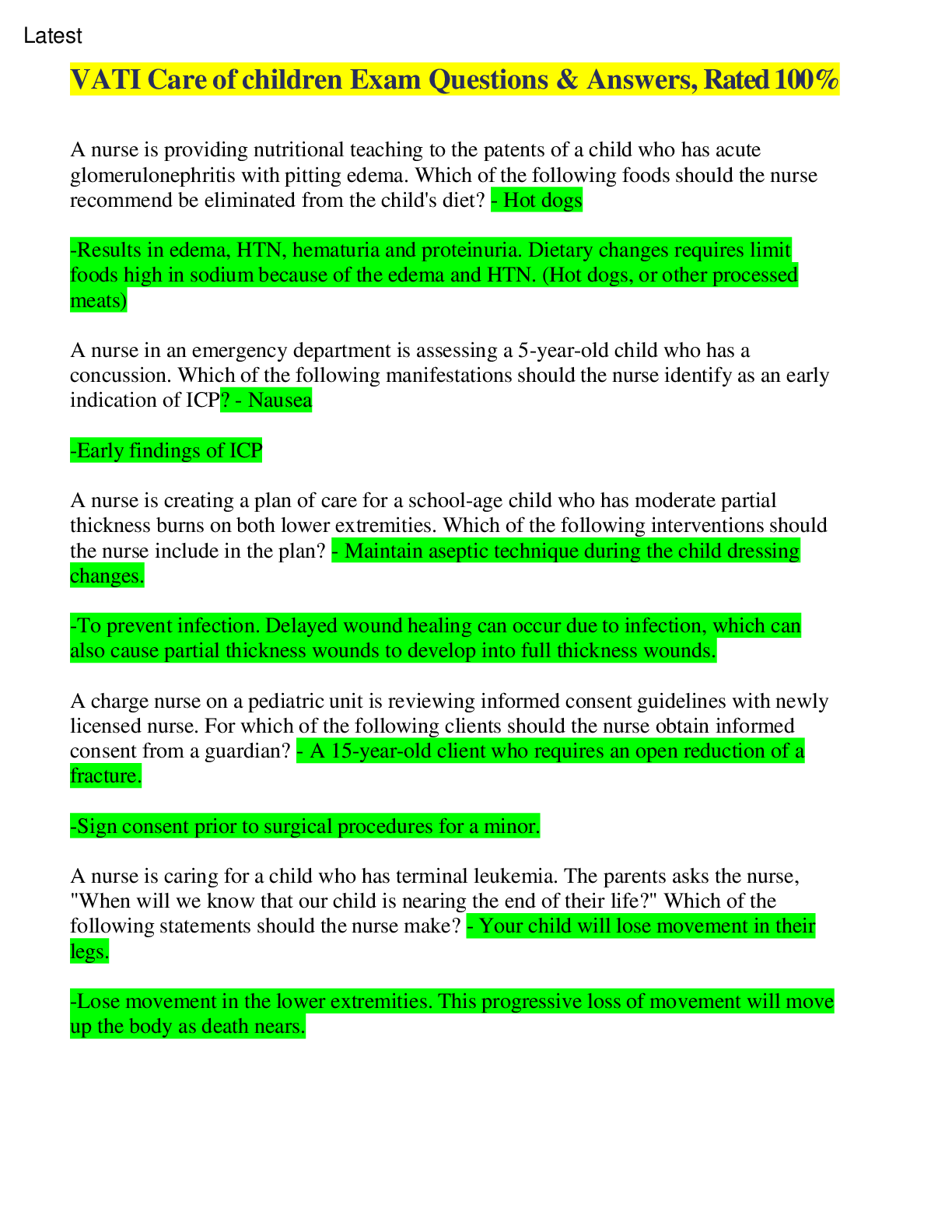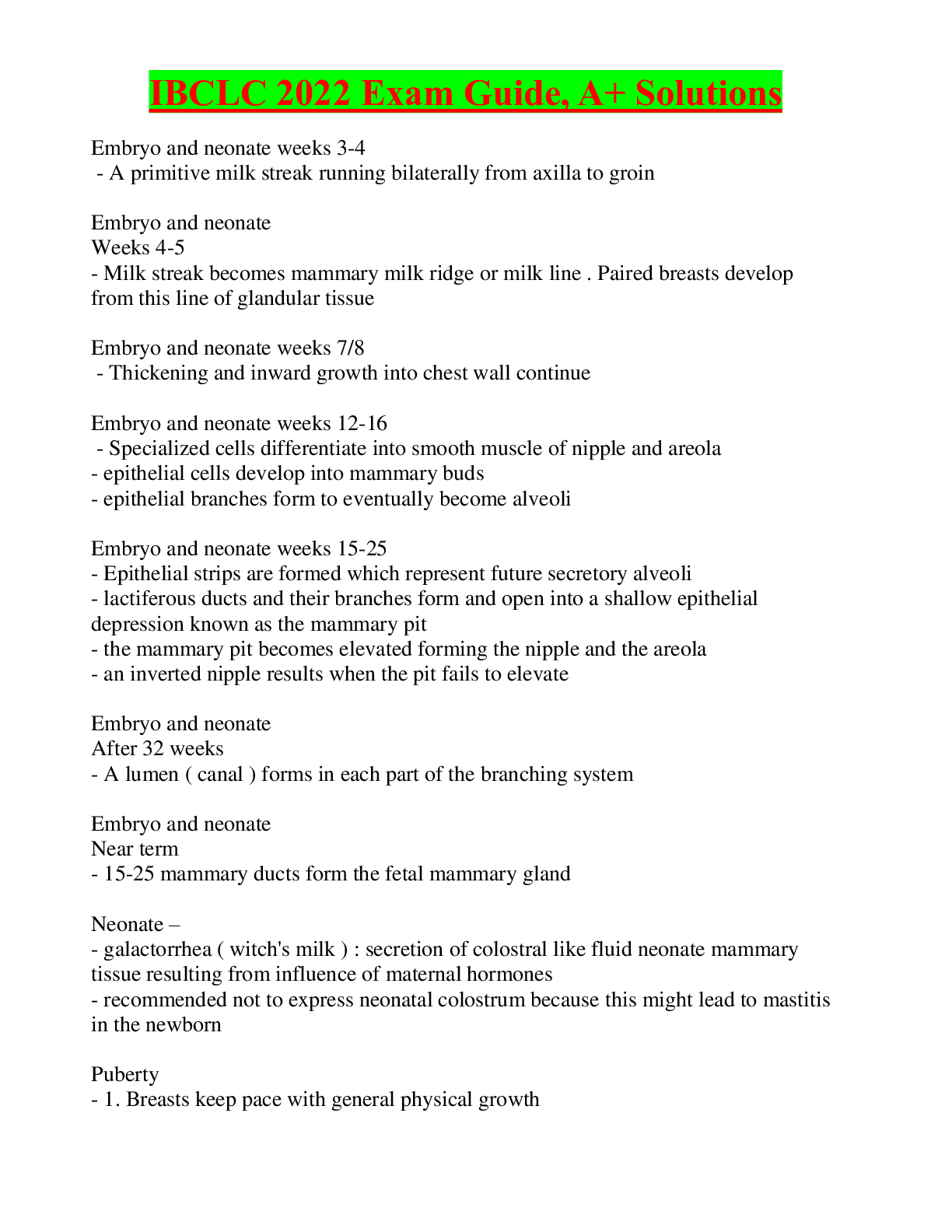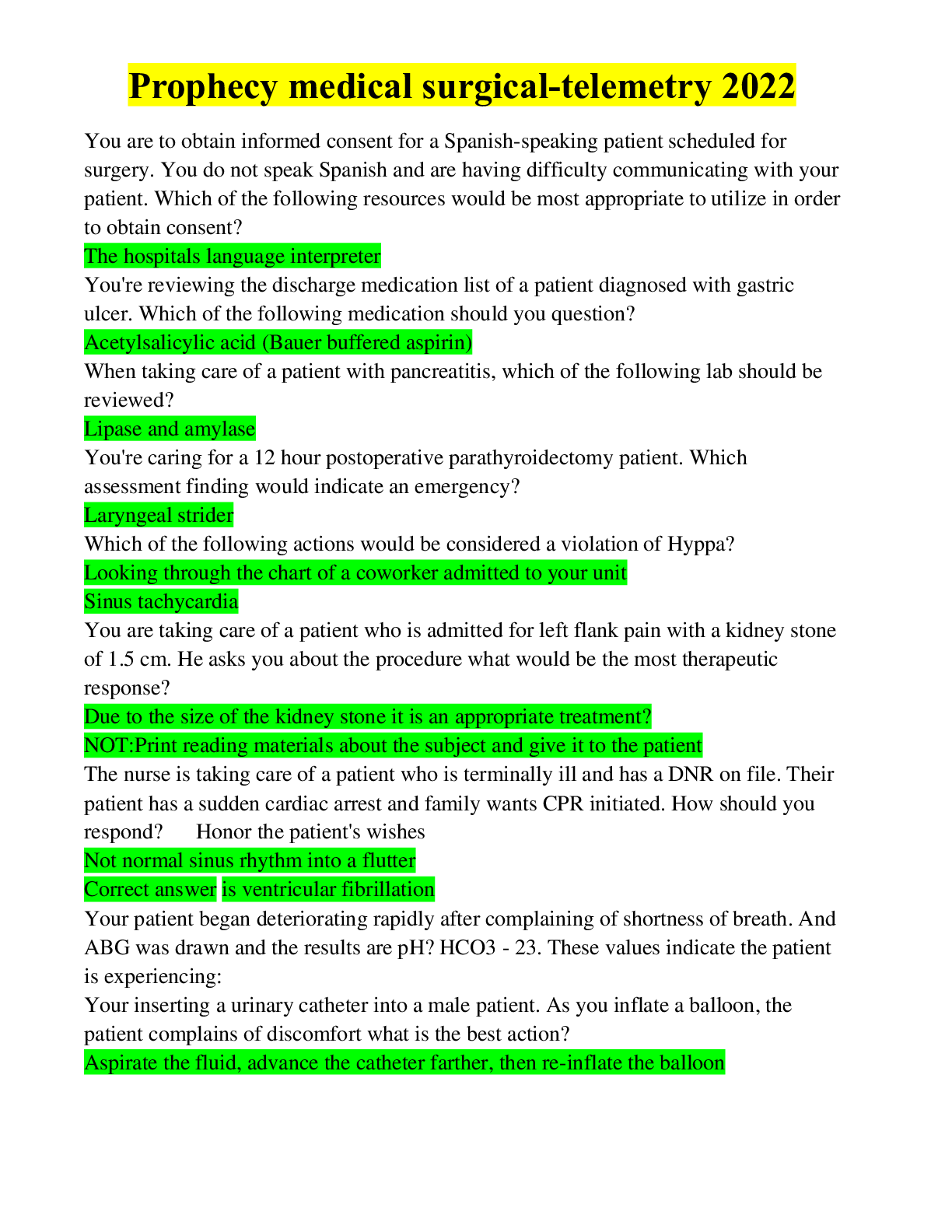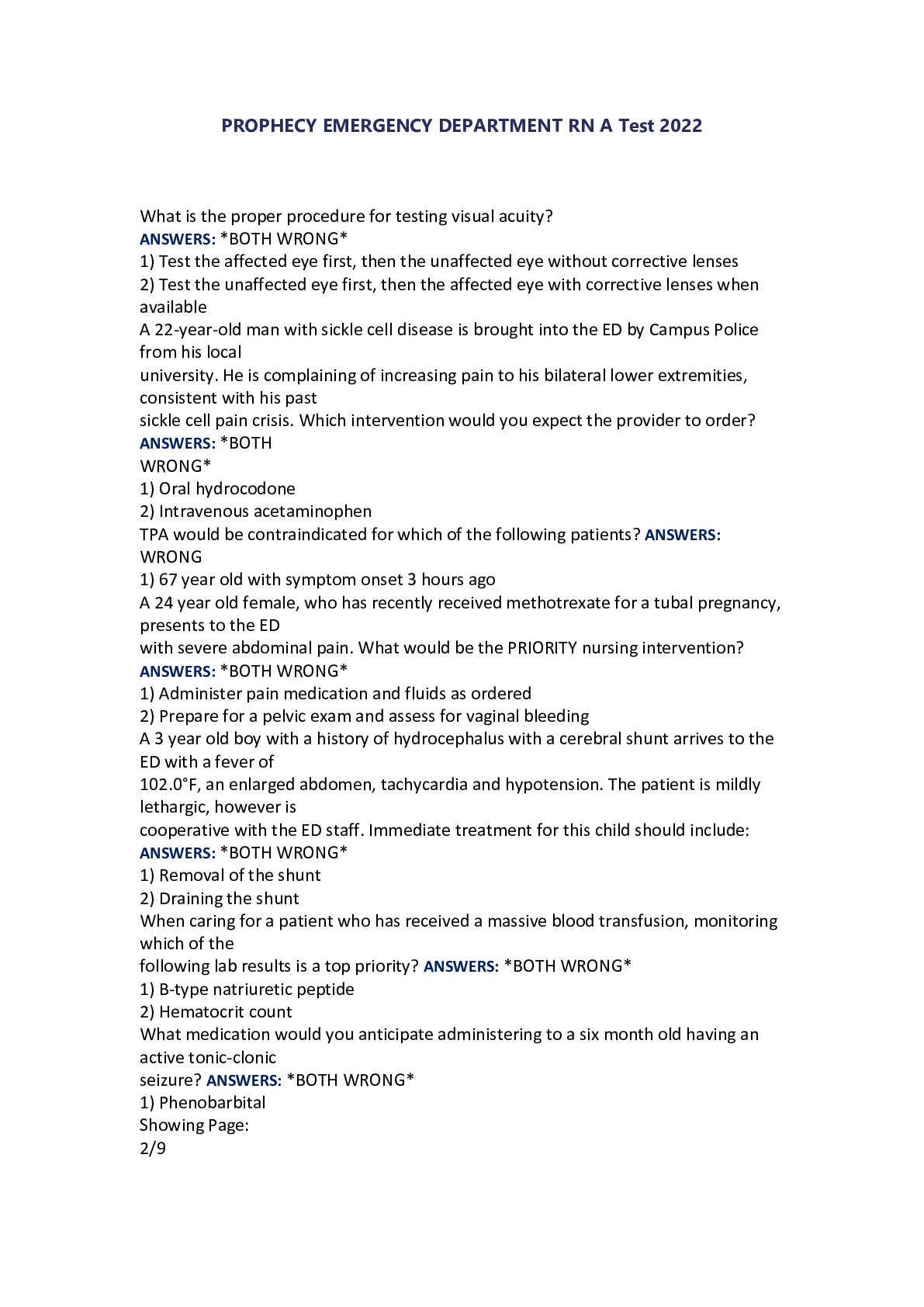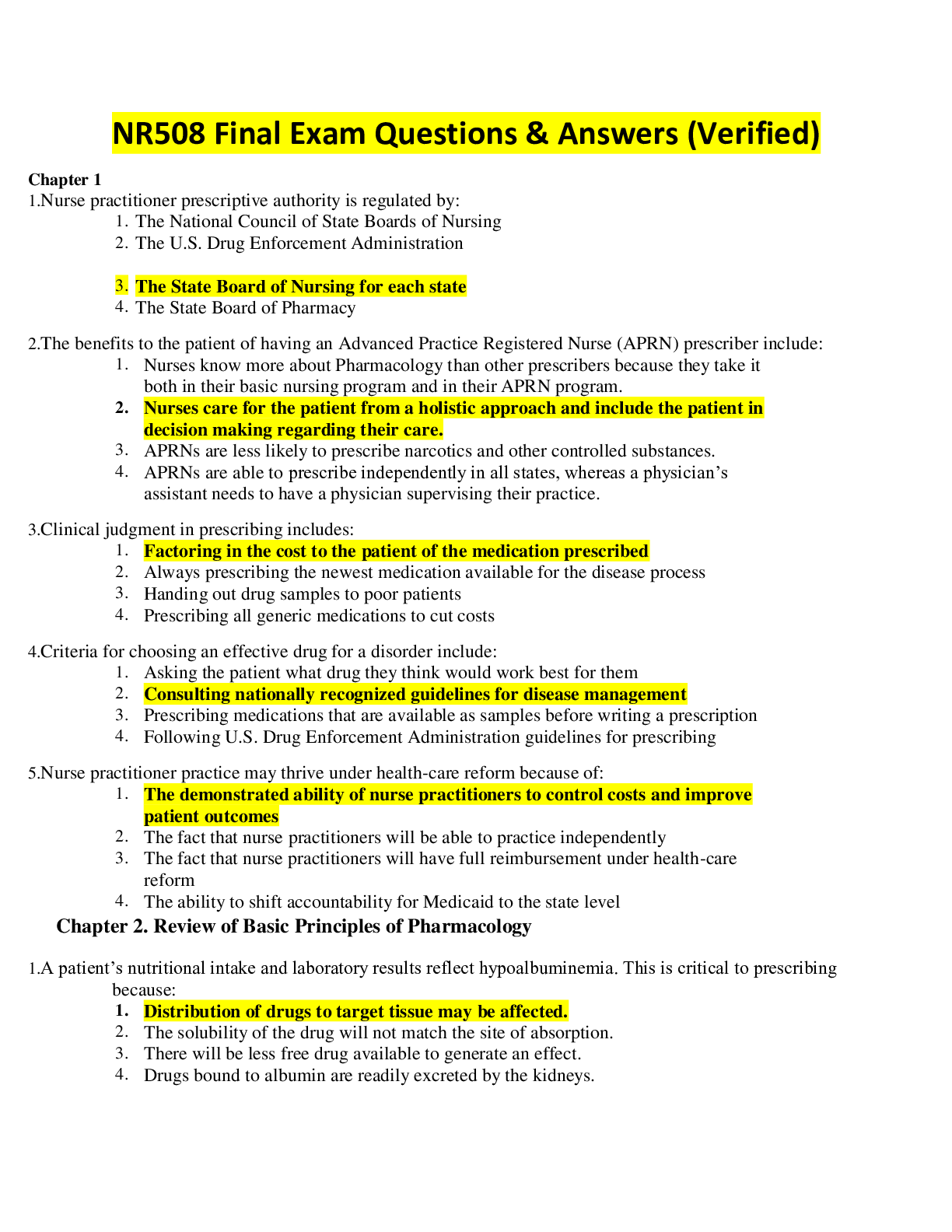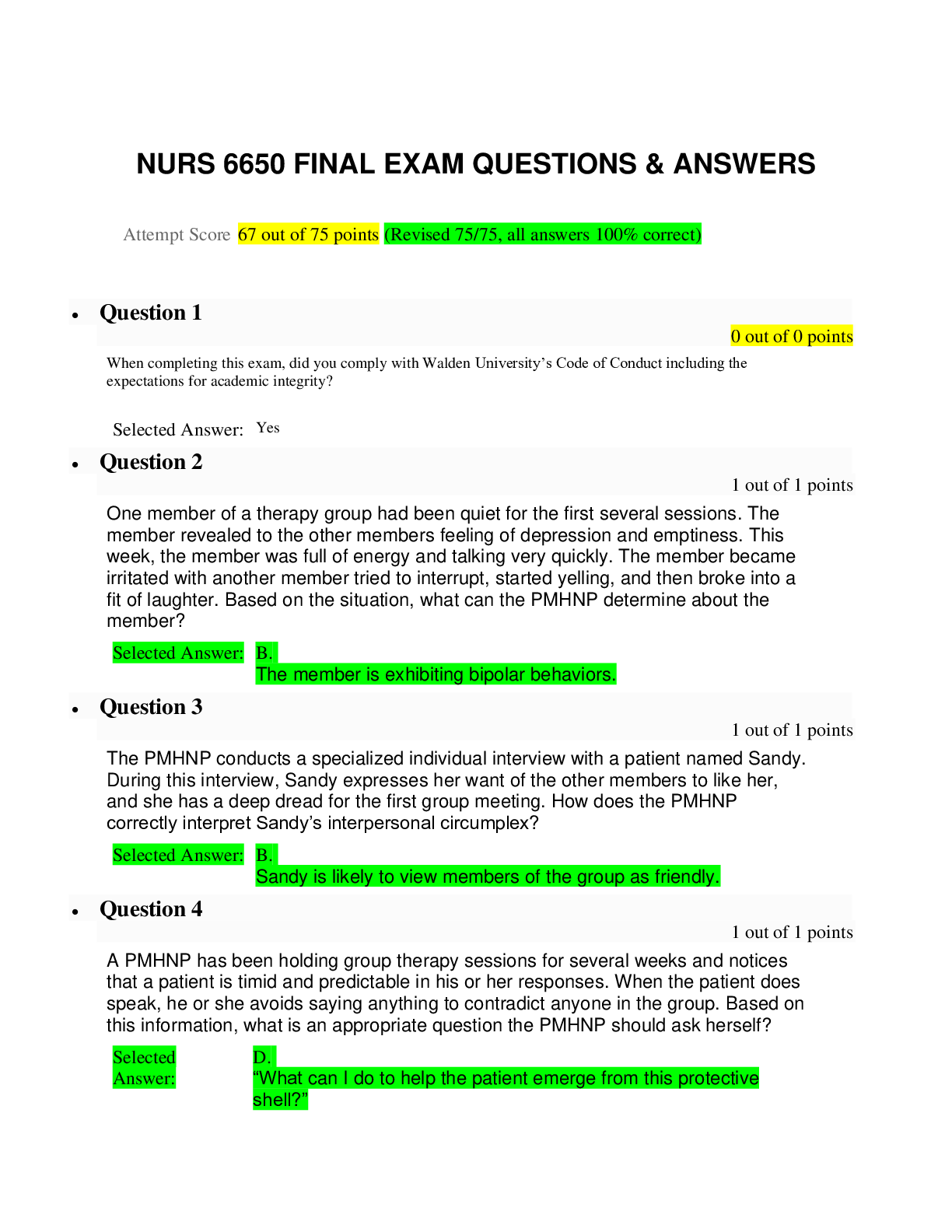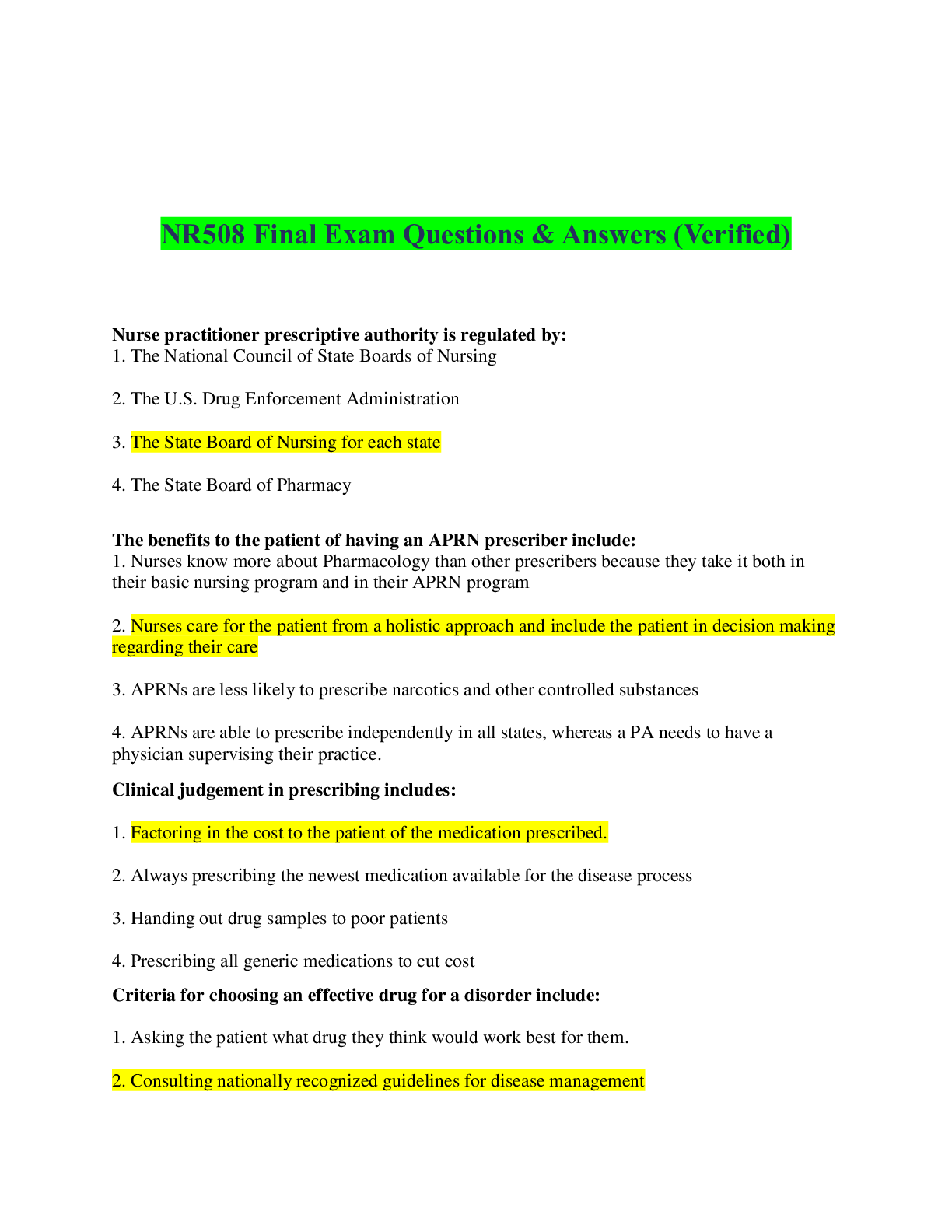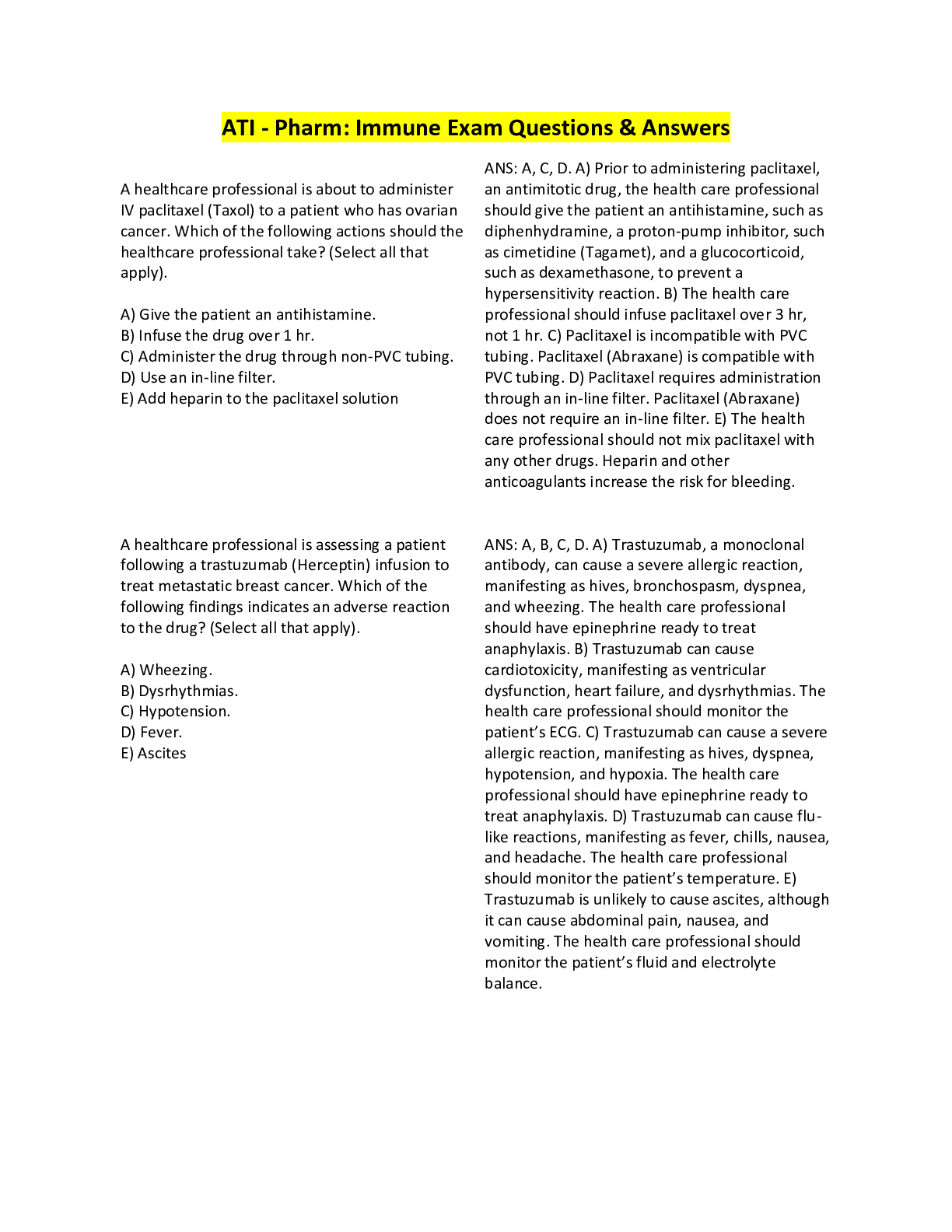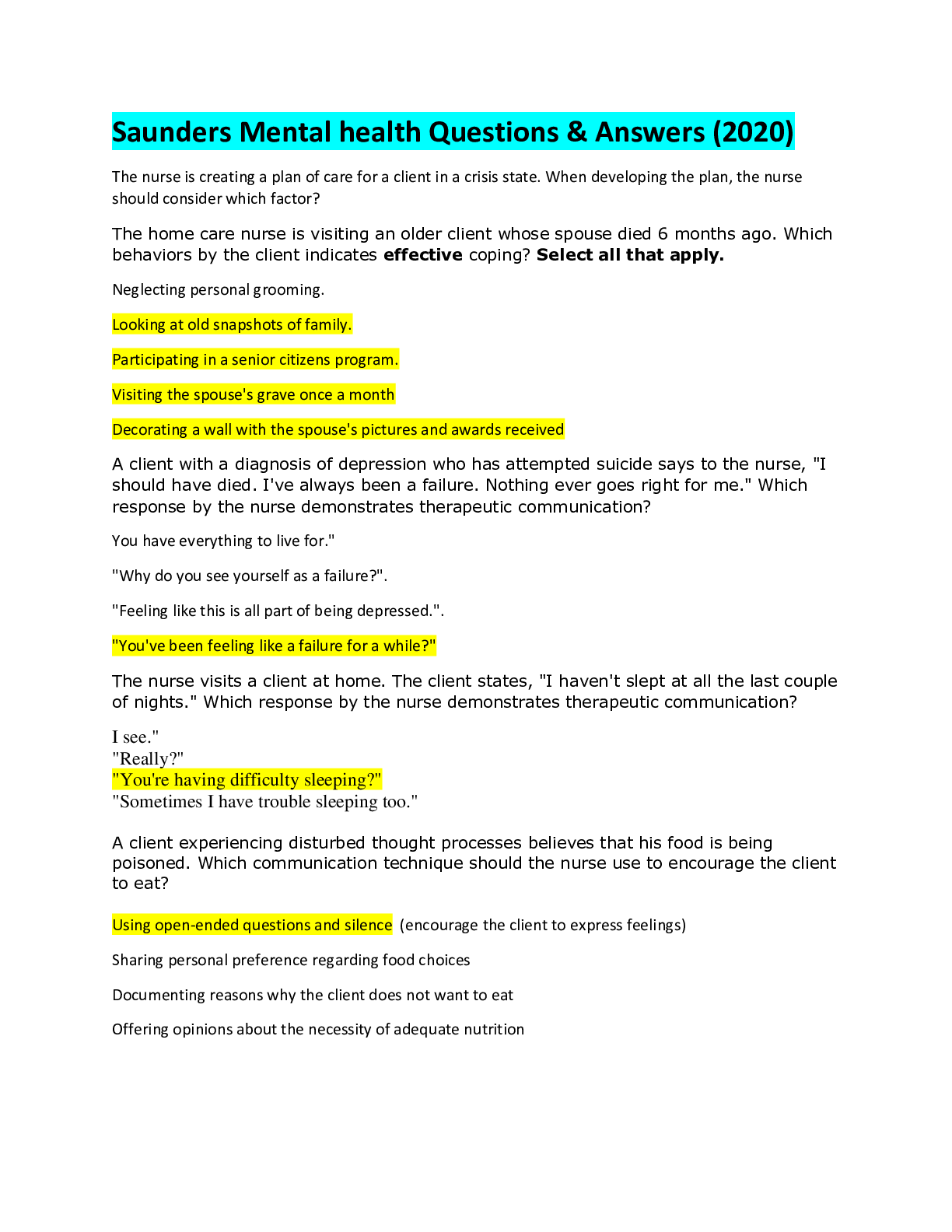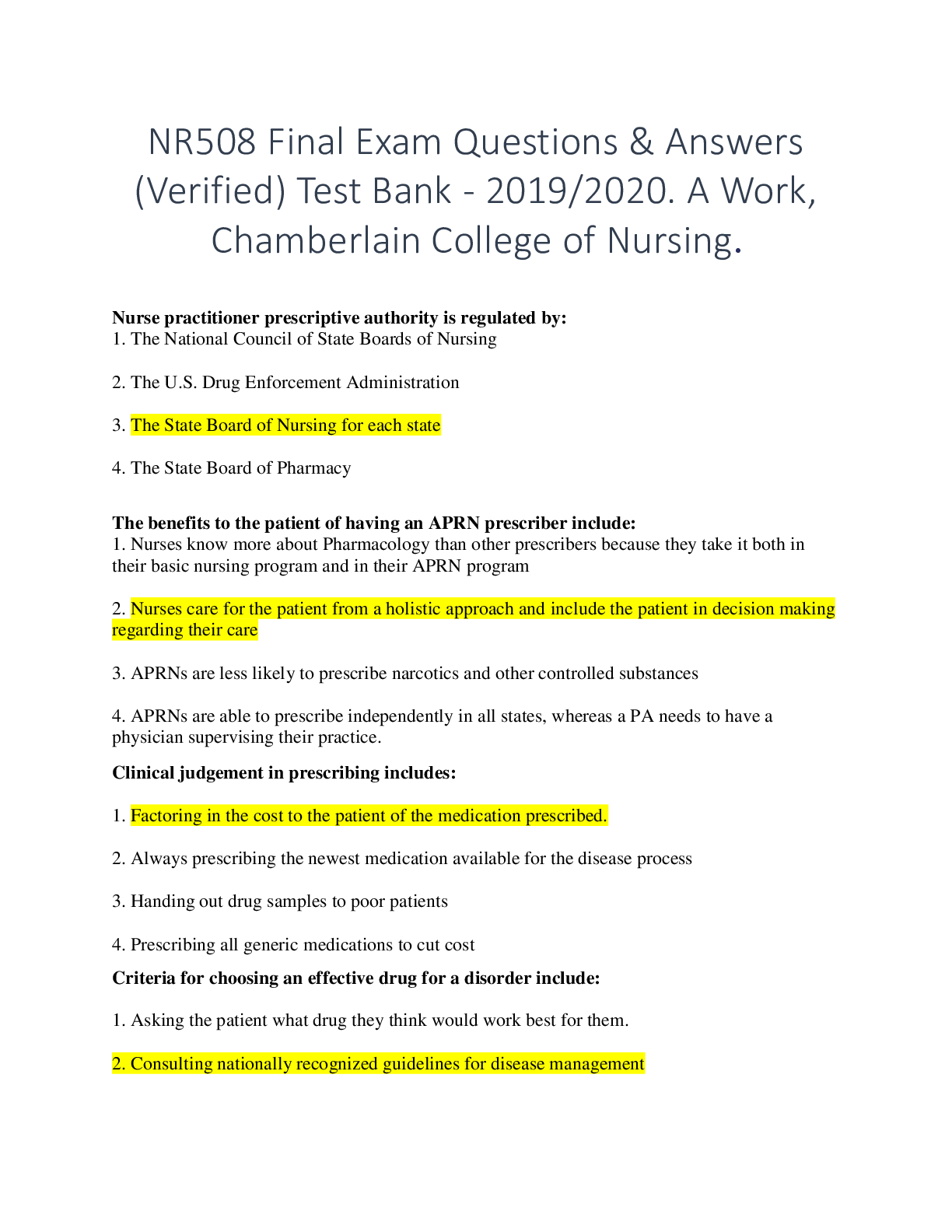*NURSING > EXAM > NCLEX Question Trainer Test 3 with NGN Real Exam Questions & Answers, Rated A+ (All)
NCLEX Question Trainer Test 3 with NGN Real Exam Questions & Answers, Rated A+
Document Content and Description Below
NCLEX Question Trainer Test 3 with NGN Real Exam Questions & Answers, Rated A+,The nurse prepares a subcutaneous injection for a client. Which statement describes a subcutaneous injection? 1. Inj... ections are administered into the muscle. 2. Injections are administered just below the skin. 3. Injections are administered creating a seal over the muscle site. 4. Injections are administered into the dermal layer of skin. - Injections are administered just below the skin. Subcutaneous injections are administered just below the skin in the subcutaneous tissue. The nurse cares for a multipara client who delivered a newborn 1 hour ago. The nurse observes the client's breasts are soft, the uterus is boggy to the right of the midline and 2 cm below the umbilicus, and there is moderate lochia rubra. Which action is most important for the nurse to take? 1. Perform a straight catheterization. 2. Offer the client the bedpan. 3. Place the newborn to the breast. 4. Massage the uterine fundus. - Offer the client the bedpan. The client is encouraged to void as the uterus is boggy and deviated to right, indicating a full bladder. The nurse provides care for a client with a peripheral intravenous (IV) saline lock. The nurse recalls which is an advantage to using a saline lock? (Select all that apply.) 1. It provides IV access for clients on a fluid restriction. 2. It provides access for intermittent IV medications. 3. It allows the client more mobility than continuous IV fluids. 4. It does not require flushing before and after medication administration 5. It is more cost effective than continuous IV infusions. - It provides IV access for clients on a fluid restriction. A saline lock provides IV access without the client needing continuous IV infusions. This is helpful in clients on a fluid restriction. It provides access for intermittent IV medications. A saline lock provides IV access for intermittent IV infusions, such as antibiotics. It allows the client more mobility than continuous IV fluids. Because the client does not have continuous IV fluids, the client may have increased mobility. It is more cost effective than continuous IV infusions. Because a saline lock can be easily inserted for medication administration only, it is more cost effective than continuous IV infusions. Clients in outpatient situations can have a saline lock inserted, the medication given, and the saline lock discontinued, which decreases the overall cost. The nurse provides care for clients on a psychiatric unit and is suddenly faced with multiple issues. In which order does the nurse address these situations? (Place the answers in order of priority starting with the first client to be seen. All options must be used.) - The client diagnosed with depression says to the nurse, "My plan is complete, and I'm ready to go." The client diagnosed with schizophrenia tells the nurse the TV should be destroyed. The client with substance abuse reports harassment by another client. The client diagnosed with bipolar disorder walks into the day room wearing only underwear. The nurse provides care to clients in a community health clinic. The nurse recalls which is a level of disease prevention? (Select all that apply.) 1. Tertiary. 2. Secondary. 3. Primary. 4. Preventative. 5. Restorative. - Tertiary. Reducing complications is the tertiary level of prevention. Secondary. Measures to cure a disease are the secondary level of prevention. Primary. Health promotion is the primary level of prevention. A client has partial-thickness and full-thickness burns over 75% of the body. The nurse is most concerned if which symptom is observed? 1. Epigastric pain. 2. Restlessness. 3. Tachypnea. 4. Lethargy. - Tachypnea. A responsive client with partial and full thickness burns over 75% of the body responds to early hypovolemic shock by adrenergic stimulation that can cause tachycardia. The priority is to monitor airway, breathing, and circulation and provide supplemental oxygen and cardiac monitoring. [Show More]
Last updated: 1 week ago
Preview 1 out of 40 pages

Buy this document to get the full access instantly
Instant Download Access after purchase
Buy NowInstant download
We Accept:

Reviews( 0 )
$15.50
Can't find what you want? Try our AI powered Search
Document information
Connected school, study & course
About the document
Uploaded On
Jul 22, 2025
Number of pages
40
Written in
Additional information
This document has been written for:
Uploaded
Jul 22, 2025
Downloads
0
Views
3


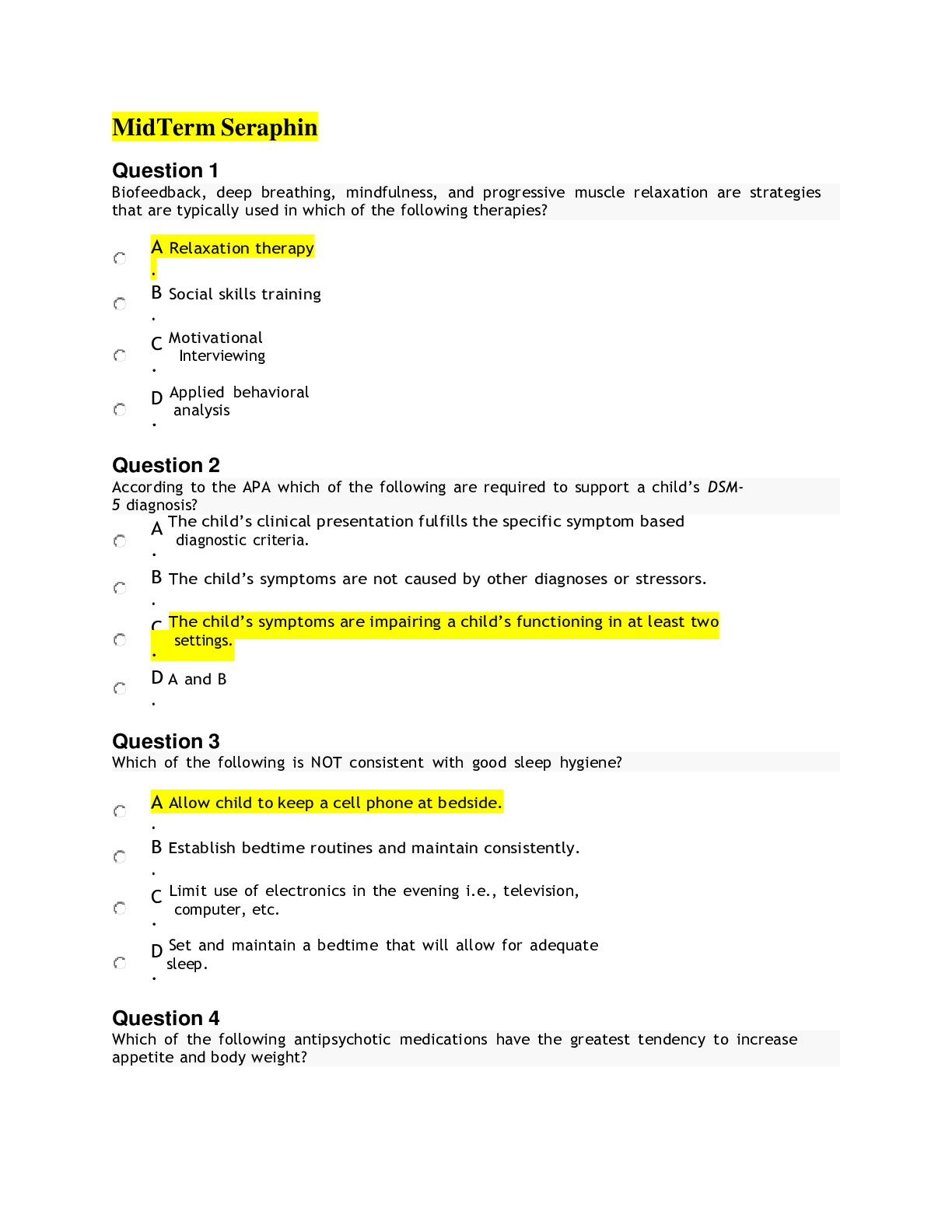
 Pediatrics Practice Exam-Answered.png)
